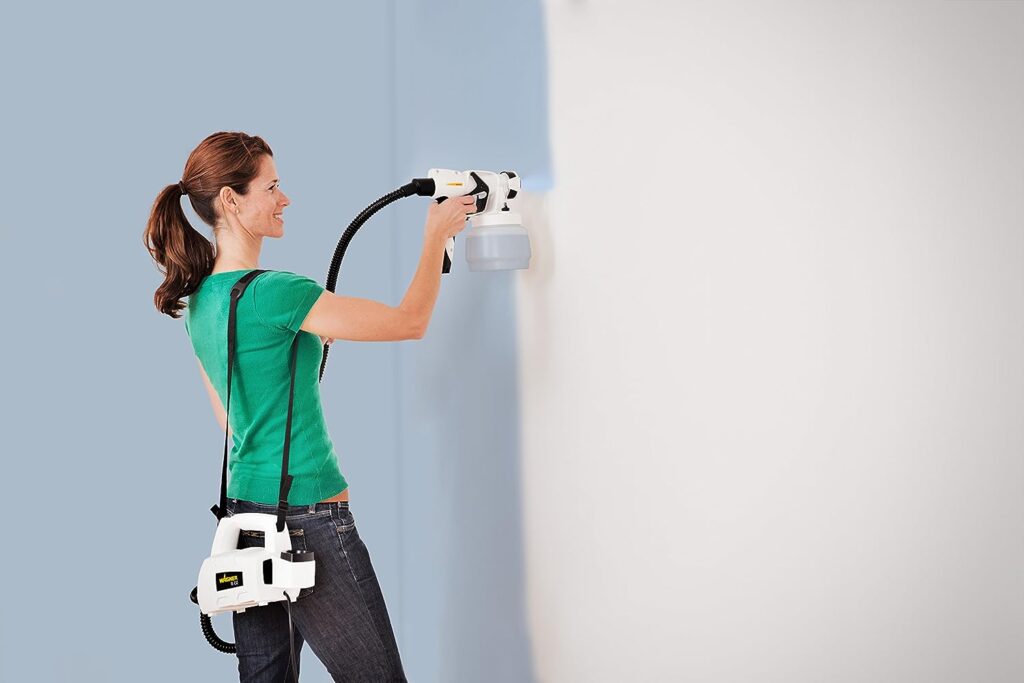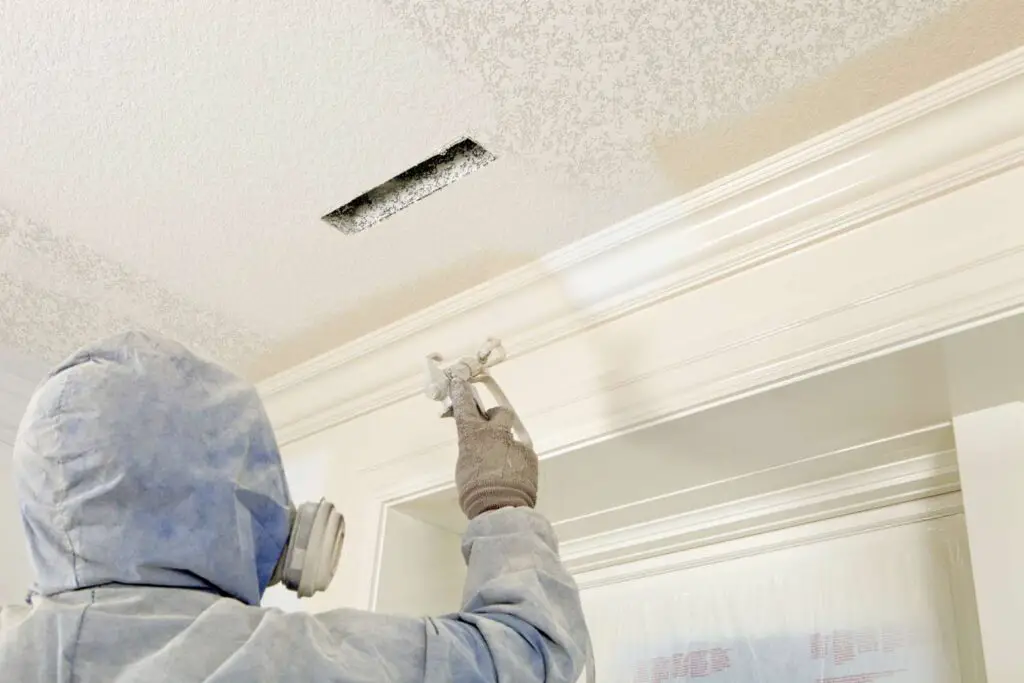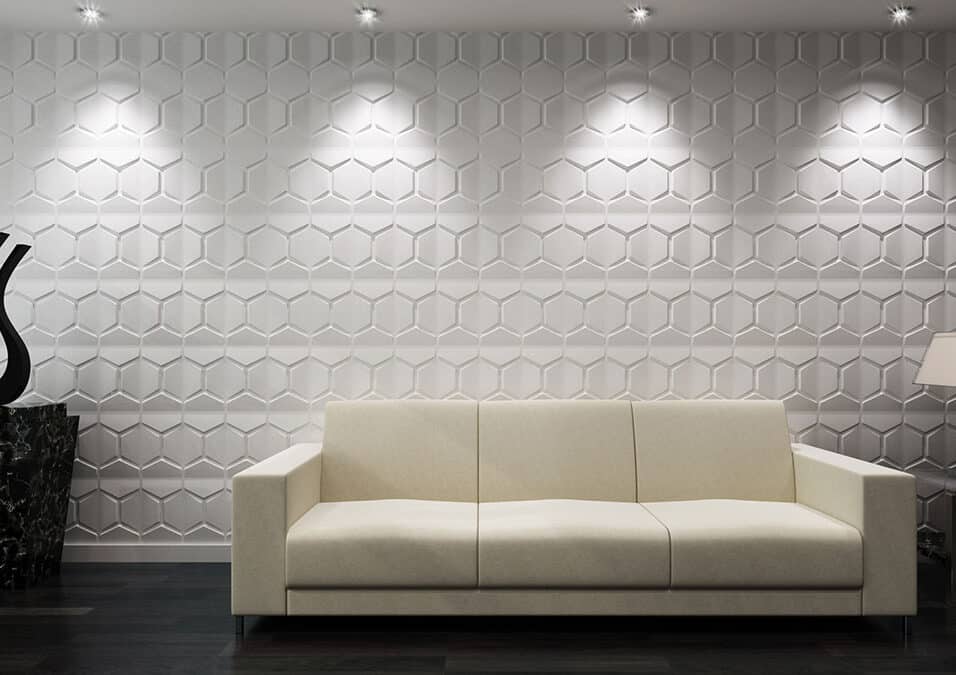How To Spray Paint Interior Walls And Ceilings
Introduction
How to Spray Paint Interior Walls and Ceilings: Painting interior walls and ceilings can revitalize your living environment. Spray painting may quickly and professionally refresh the color scheme or cover up unattractive blemishes and stains. This article will teach you how to spray paint interior walls and ceilings for a successful project.
Spray painting offers several advantages over traditional brush and roller methods. Firstly, it allows for a faster application, covering large areas in a fraction of the time. This is particularly beneficial when painting large rooms or high ceilings. Additionally, spray painting provides a smooth and even finish, eliminating brush strokes and roller marks that can be visible with other techniques. It also allows for better coverage, reaching into corners and crevices that may be difficult to access with a brush or roller.
Furthermore, spray painting can be more cost-effective as it requires less paint compared to traditional methods. The paint is atomized into tiny droplets, resulting in better paint adhesion and less wastage. This can save you money on paint and reduce the number of coats needed to achieve the desired color and finish.
Preparation is key: Before you begin spray painting, it is crucial to properly prepare the surfaces you will be working on. Start by removing any furniture, decorations, and fixtures from the room or covering them with drop cloths to protect them from over paint sprayer. Next, clean the walls and ceilings thoroughly to remove any dirt, dust, or grease that could affect the paint adhesion. Patch any holes or cracks with spackle and sand them smooth for a seamless finish. Finally, apply painter’s tape to protect trim, windows, and other areas you don’t want to be painted.

Do you spray interior walls or ceiling first?
Simply spray the ceiling, and let overspray land on the wall and ceiling trim. After the ceiling paint dries, it’s time to paint the walls.
When it comes to painting the interior of a room, whether it’s the walls or the ceiling, there is often a debate about which one should be painted first. Some people argue that it is best to start with the walls, while others believe that painting the ceiling first is the way to go. Ultimately, the decision may depend on personal preference and the specific circumstances of the project.
One argument for painting the walls first is that it allows for easier touch-ups. When painting the walls, it is common for some paint to splatter or drip onto the ceiling. If the ceiling has already been painted, it can be difficult to remove these accidental marks without damaging the freshly painted surface. By painting the walls first, any mistakes or touch-ups can be easily made without worrying about ruining the ceiling. On the other hand, some people prefer to paint the ceiling first for practical reasons.
Is spray painting ceilings a good idea?
Using an airless sprayer to spray paint the ceiling makes your job easier – it’s not just quicker, it’s almost effortless. You save time, energy and material – and therefore money!
One of the main advantages of spray painting ceilings is that it can be a much faster and more efficient method compared to using a brush or roller. With a spray gun, you can cover a large area in a short amount of time, which can be especially beneficial if you have a large ceiling to paint. This can save you a significant amount of time and effort compared to traditional painting methods.
Another advantage of spray painting ceilings is that it can provide a more even and consistent finish. When using a brush or roller, it can be difficult to achieve a smooth and uniform coat of paint, especially on textured ceilings. Spray painting allows for a more controlled application of paint, resulting in a more professional-looking finish.
However, there are also some challenges and considerations to keep in mind when spray painting ceilings. One of the main challenges is the potential for overspray. When using a spray gun, it is important to properly mask off and protect the surrounding areas to prevent paint from getting on furniture, floors, or walls. This can require additional time and effort to properly prepare the space before painting.
Additionally, spray painting ceilings can be more difficult for inexperienced painters. It requires a certain level of skill and technique to achieve an even and consistent coat of paint without drips or streaks. If you are not confident in your abilities, it may be best to hire a professional painter to ensure a high-quality result.
Which is better spray paint or roller?
When it comes to painting, whether it’s a small DIY project or a large-scale renovation, choosing the right tools can make a significant difference in the final result. Two popular options for applying paint are spray paint and rollers. Both have their advantages and disadvantages, and the choice between the two ultimately depends on the specific project and personal preference.
Spray paint offers several benefits that make it a popular choice for many painters. One of the main advantages is its ability to provide a smooth and even finish. The fine mist of paint particles created by a spray paint can result in a professional-looking coat with no visible brush strokes or roller marks. This makes spray paint an excellent option for surfaces that require a flawless finish, such as furniture or metal objects.
Another advantage of spray paint is its efficiency. It covers large areas quickly and evenly, making it ideal for projects that involve painting walls or ceilings. Additionally, spray paint can reach tight corners and crevices that may be challenging to access with a roller. This versatility allows for more precise and detailed work.
Rollers, on the other hand, have their own set of advantages. One of the main benefits of using a roller is its ability to hold more paint, resulting in fewer trips to the paint tray. This makes rollers a time-saving option, especially for larger projects. Additionally, rollers are generally more affordable than spray paint equipment, making them a budget-friendly choice for many homeowners.
Rollers also offer better control over the thickness of the paint application. With a roller, it is easier to achieve a consistent and even coat of paint, especially on textured surfaces. This makes rollers a preferred option for painting walls or surfaces with imperfections.
Is spray paint better than paint?
Spray paint and traditional paint are two popular options for adding color and protection to surfaces. Both have their advantages and disadvantages, and the choice between the two depends on the specific project and personal preferences. In some cases, spray paint may be a better option than traditional paint, while in others, traditional paint may be the preferred choice.
Spray paint offers several benefits over traditional paint. One of the main advantages is its ease of use. Spray paint can be applied quickly and evenly, allowing for a smooth and professional finish. It is also convenient for covering large areas or hard-to-reach places, such as intricate designs or small crevices. Additionally, spray paint dries faster than traditional paint, reducing the waiting time between coats or for the final result.
Another advantage of spray paint is its versatility. It can be used on a variety of surfaces, including metal, wood, plastic, and even fabric. This makes it a popular choice for DIY projects, as it eliminates the need for multiple types of paint. Spray paint also comes in a wide range of colors and finishes, allowing for endless possibilities in terms of design and customization.
However, traditional paint also has its own set of advantages. One of the main benefits is its durability. Traditional paint tends to be more resistant to wear and tear, making it a better option for high-traffic areas or surfaces that are exposed to harsh weather conditions. It also provides better coverage and can be easily touched up or repainted if needed. Additionally, traditional paint offers more control and precision.
Is it better to spray or roll interior walls?
Best Finish: Sprayers
When used correctly, spraying paint leaves a better finish than paint rollers. Sprayers aerate the paint, leaving a smoother appearance without brush strokes or lap marks (differences in color and sheen). However, sprayers can drip or coat a wall inconsistently, just like a paintbrush.
When it comes to painting interior walls, spraying and rolling. Spraying is a popular method for painting interior walls, especially in large commercial or industrial spaces. One of the biggest advantages of spraying is its speed and efficiency. Additionally, spraying creates a smooth and even finish, without any brush or roller marks. This can be particularly beneficial if you have textured walls or want a flawless, professional-looking result.
However, there are also some downsides to spraying. Another drawback is the potential for a higher paint consumption compared to rolling. Spraying tends to use more paint, as some of it is lost in the air during the process.
There are two main methods that professionals use:
Rolling, on the other hand, is a more traditional and widely used method for painting interior walls. It involves using a roller brush to apply paint directly onto the walls. One of the biggest advantages of rolling is its versatility. It can be used on a variety of surfaces, including smooth, textured, or uneven walls.
However, rolling does have its limitations. It can be a slower process compared to spraying, especially when covering large areas. Additionally, rolling may leave behind brush marks or texture, depending on the type of roller and technique used. This can be a concern if you are aiming for a completely smooth and flawless finish.
Preparing interior walls and ceilings for spray painting is crucial to achieve a professional and long-lasting finish. The first step is to thoroughly clean the surfaces to remove any dirt, dust, or grease. This can be done using a mild detergent and water solution, followed by rinsing and allowing the surfaces to dry completely. Next, it is important to repair any cracks, holes, or imperfections on the walls and ceilings.
What safety precautions should be taken when spray painting interior walls and ceilings?
When spray painting interior walls and ceilings, it is crucial to prioritize safety to prevent any accidents or health hazards. Here are some important safety precautions to consider:
1. Ventilation: Ensure that the area you are working in is well-ventilated. Open windows and doors to allow fresh air to circulate and use fans or exhaust systems to remove fumes.
2. Protective Gear: Always wear appropriate protective gear, including a respirator or mask to protect your lungs from inhaling paint particles and fumes. Additionally, wear safety goggles to shield your eyes from any potential splatters or overspray.
3. Covering and Masking: Before starting the spray painting process, cover and mask off any areas that you do not want to be painted. Use drop cloths or plastic sheets to protect floors, furniture, and fixtures from paint splatters.
Which type of spray paint is recommended for interior walls and ceilings?
When it comes to choosing the right type of spray paint for interior walls and ceilings, it is important to consider several factors. One of the most important factors is the type of surface you will be painting. Different surfaces require different types of paint to achieve the best results. For example, if you are painting a wall that has been previously painted with latex paint, it is recommended to use a latex-based spray paint. This will ensure proper adhesion and a smooth finish.
Another factor to consider is the desired finish. If you are looking for a glossy finish, it is recommended to use a high-gloss spray paint. On the other hand, if you prefer a matte or satin finish, there are spray paints available specifically for those finishes. It is important to read the labels and product descriptions to ensure you are selecting the right type of spray paint for your desired finish.
Additionally, it is important to consider any specific requirements or recommendations from the manufacturer of the spray paint. Some spray paints may have specific instructions for use on interior walls and ceilings, and it is important to follow these instructions to achieve the best results. Overall, it is recommended to choose a high-quality spray paint that is specifically designed for interior use, as this will ensure a durable and long-lasting finish.
How can one achieve a smooth and even finish when spray painting interior walls and ceilings?
To achieve a smooth and even finish when spray painting interior walls and ceilings, it is important to follow a few key steps. Firstly, make sure to properly prepare the surface by cleaning it thoroughly and removing any dirt, dust, or grease. This can be done by using a mild detergent and water solution, followed by rinsing and allowing the surface to dry completely.
Next, it is crucial to prime the surface before applying the spray paint. Priming helps to create a smooth and even base for the paint to adhere to, and it also helps to hide any imperfections on the surface. Choose a high-quality primer that is specifically designed for the type of surface you are painting, whether it is drywall, plaster, or wood.
Once the surface is properly primed, it is time to apply the spray paint. Hold the can or spray gun at a consistent distance from the surface, typically around 8 to 12 inches. Begin spraying in a steady and controlled motion, using overlapping strokes to ensure even coverage. It is important to maintain a consistent speed and distance throughout the painting process to avoid any unevenness or streaks.
Are there any specific techniques or tips for avoiding drips or overspray when spray painting interior walls and ceilings?
When spray painting interior walls and ceilings, it is important to take certain precautions to avoid drips or overspray. One technique is to start by properly preparing the surface. Another tip is to use a high-quality spray paint that is specifically designed for interior walls and ceilings. These paints are formulated to have a lower viscosity, which helps to minimize the chances of drips or overspray.
When actually spraying the paint, it is crucial to maintain a consistent distance from the surface. Holding the spray gun too close can result in drips, while holding it too far away can cause overspray. It is recommended to hold the spray gun approximately 8 to 12 inches away from the surface and move it in a smooth, sweeping motion. Additionally, it is important to apply the paint in thin, even coats, rather than trying to cover the entire surface in one go. This helps to prevent drips and allows for better control over the paint application.

Conclusion
Learning how to spray paint interior walls and ceilings can be a valuable skill for homeowners and DIY enthusiasts. By following the proper steps and using the right equipment, individuals can achieve professional-looking results and transform the look of their living spaces.
First and foremost, it is important to prepare the area before starting the spray painting process. This includes removing furniture and covering floors and any other surfaces that are not intended to be painted. Additionally, walls and ceilings should be cleaned and repaired if necessary, ensuring a smooth and even surface for the paint to adhere to.
Next, selecting the right paint and equipment is crucial for achieving the desired outcome. High-quality paint and a reliable spray gun can make a significant difference in the final result. It is also important to choose the appropriate nozzle size for the project, as this will determine the width and coverage of the spray pattern.
Spray painting interior walls and ceilings can be a cost-effective and efficient way to update the look of a home. By following the proper steps, selecting the right equipment, and mastering the technique, individuals can achieve professional-looking results and transform their living spaces. Whether it is a small touch-up or a complete room makeover, spray painting can provide a fresh and modern look that will enhance the overall aesthetic of any interior space.








